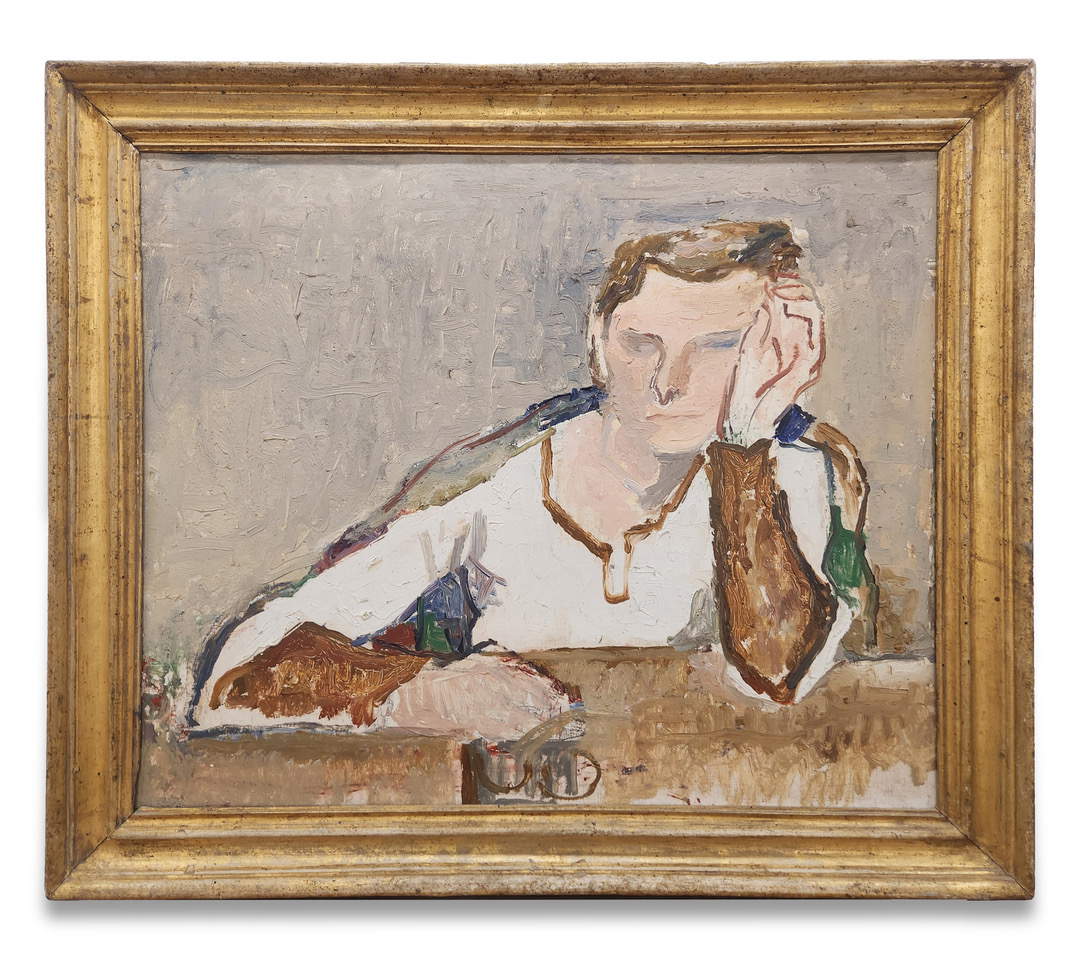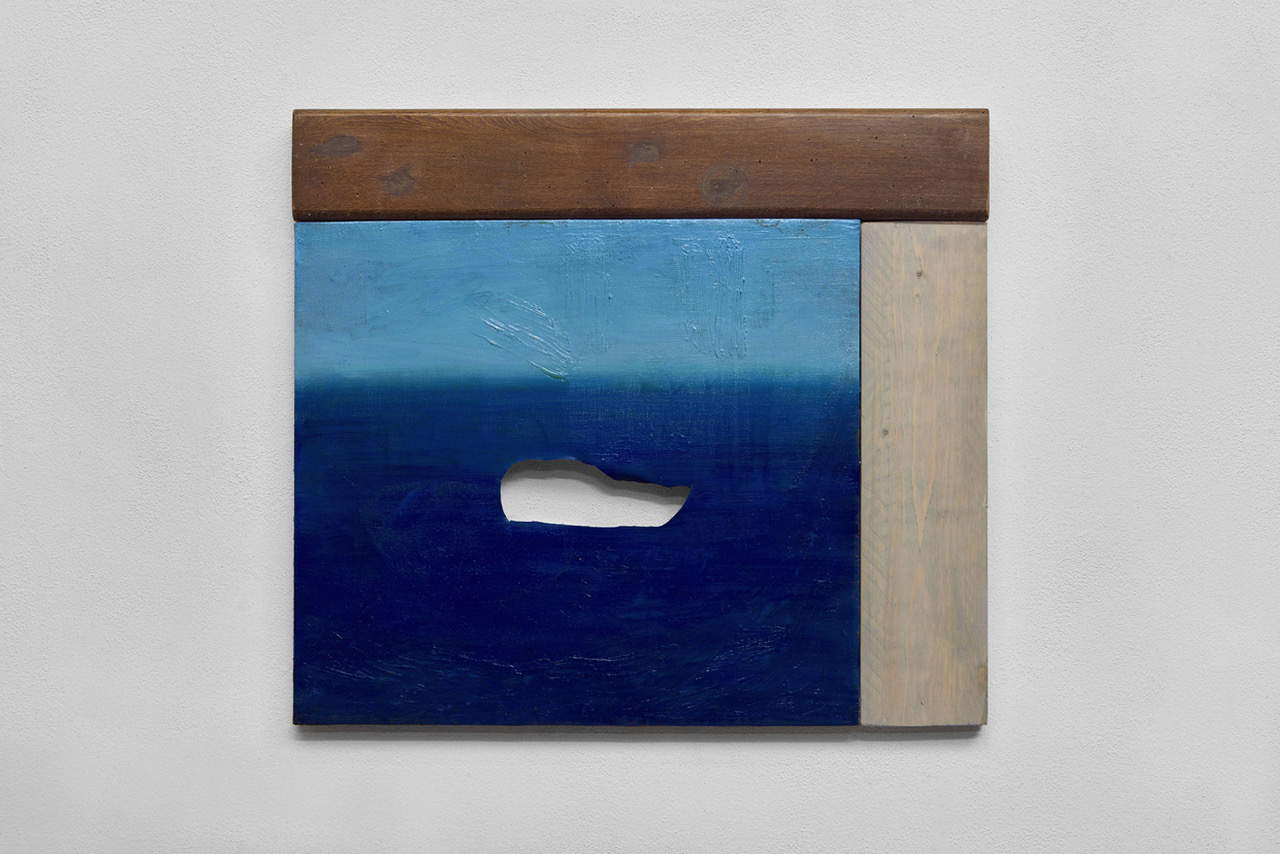Sedendo e mirando: Luca Bertolo on display in Ascoli Piceno between Licini and Leopardi
From Dec. 14, 2024 to May 4, 2025, the Osvaldo Licini Gallery of Contemporary Art in Ascoli Piceno will host Ma sedendo e mirando. The Intruder, a solo exhibition by Luca Bertolo (Milan, 1968) winner of the fourth edition of the Osvaldo Licini by Fainplast Prize. This award, among the most prestigious in the Italian art scene, celebrates the contemporary contribution to painting, interweaving tradition and innovation. Curated by Alessandro Zechini, the exhibition invites a dialogue between Bertolo’s work, the figure of Osvaldo Licini and the poetic suggestions of Leopardi. The title, inspired by the famous line from The Infinite, introduces a central theme: the presence of the “intruder” as a destabilizing and unexpected element, capable of broadening the viewer’s perspectives.
The “intruder” in Bertolo’s vision is not an explicit element but a subtle apparition, emerging between the folds of his works. The exhibition opens with an installation that encapsulates this tension: a viewfinder through which to observe a painted angel. The angel’s eyes, made of mirrors, reverse roles, forcing the visitor to see himself reflected in the work. It is a visual exchange that emphasizes the reciprocity between the viewer and the viewed.
This device places the visitor in a position of an “intruder” in the artist’s creative space, a place where observation and interpretation become confused. The theme is echoed in reinterpretations of historical works: Bertolo’s angel recalls Lorenzo Lotto’s Portrait of a Young Man, already reworked by Giulio Paolini with Giovane che guarda Lorenzo Lotto (1967). However, Bertolo introduces an additional complexity: the mirrored eyes unite heaven and earth, actively involving the viewer in the meaning of the work.



Works in the exhibition
The exhibition also welcomes a work by Jacopo Benassi, who was invited by Bertolo to participate in the project. Benassi exhibits a self-portrait depicting a detail of his own body: hair. This element, intentionally raw and earthly, creates a strong contrast with the purity and ideal represented by the angel. The dialogue between the two works becomes a confrontation of opposites: spirituality and corporeality, aspiration and materiality.
Among the most significant works, Bertolo presents his Marche Landscapes, the result of a residency at the Premio Licini space. The paintings are inspired by the territory, but also by Licini’s Portrait of Nanny, a 1926 work that anticipates his abstract phase. In Bertolo’s landscapes, the sky becomes the protagonist, while the land remains a flat surface, painted with the color of the canvas. The approach recalls Cézanne’s Sainte-Victoire Mountain, but reverses perspective, focusing on the ambiguity of form. Lightness and spontaneity also characterize Invisible Traces, two canvases made with an airbrush. Here, spots and marks evoke informal writings, fragments of a mental landscape. The use of the airbrush, combining chance and control, creates a balance between dynamism and contemplation.
The journey culminates with the video Methallomai, a poetic narrative that follows three figures on a journey to the moon. The spatial exploration is transformed into a metaphor for the inner journey, linking Bertolo, Leopardi and Licini in a common reflection on the tension between the earthly and the celestial. The moon, a recurring symbol in Licini’s art, here becomes the focus of an existential quest that transcends physical and conceptual boundaries.
The exhibition, then, is not only a tribute to Italian painting but also an encounter between different visions and languages. Leopardi represents the poetic contemplation of the infinite; Licini, the artistic aspiration toward abstraction; Bertolo, the interrogation of the contemporary through painting. In this triangle, art becomes a tool for exploring the human condition, transforming distance into a key to understanding the present.




Luca Bertolo: a protagonist of the contemporary scene
Born in 1968, Luca Bertolo has a multifaceted career behind him: after studying computer science, he devoted himself to painting, graduating from the Brera Academy. His works have been exhibited in prestigious Italian and international spaces, including Fondazione Prada, MART in Rovereto, and MACRO in Rome. In 2024 he will open his first anthological exhibition at CEAAC in Strasbourg. Alongside his artistic practice, Bertolo has cultivated writing, contributing to magazines and publishing essays on contemporary art.
He has resided in a small mountain hamlet in the Apuan Alps since 2005. He has participated in exhibitions in public and private spaces including MART, Rovereto; Aalst Netwerk, Aalst; MAN, Nuoro; Fondazione del Monte; Bologna; MAGA, Gallarate; Fondazione Prada, Milan; GAM, Turin; GNAM, Rome; Centro Pecci, Prato; Nomas Foundation, Rome; 176/Zabludowicz Collection, London; MACRO, Rome; Kettle’s Yard, Cambridge; SpazioA, Pistoia; Arcade, London/Brussels; Marc Foxx, Los Angeles; Galerie Perrotin, Paris; Galerie Tatjana Pieters, Ghent; The Goma, Madrid; Galeria 3+1, Lisbon; Pierogi Gallery, New York; Galleria P420, Bologna.Some of his articles, which have appeared in magazines and websites, have found their way into the book I baffi del bambino. Writings on art and artists, Quodlibet, 2018. In 2022 he edited the Italian edition of Lo strano posto della religione nell’arte contemporanea, by James Elkins (Johan & Levi, 2022). He has been teaching painting at the Academy of Fine Arts in Bologna since 2015.
 |
| Sedendo e mirando: Luca Bertolo on display in Ascoli Piceno between Licini and Leopardi |
Warning: the translation into English of the original Italian article was created using automatic tools. We undertake to review all articles, but we do not guarantee the total absence of inaccuracies in the translation due to the program. You can find the original by clicking on the ITA button. If you find any mistake,please contact us.




























